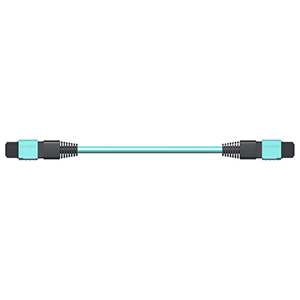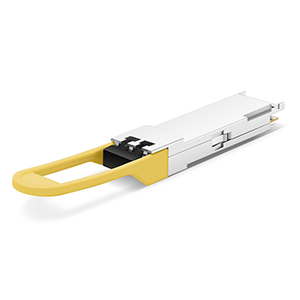Polarization characteristics play an important role in optical fiber communications. This article will explore the key functions of polarization-maintaining optical fiber cables. We will first define the basic structure and principle of polarization-maintaining optical fiber cables and explain how they differ from ordinary optical fibers. Next, we will analyze in depth the main functions of polarization-maintaining optical fiber cables, including maintaining the polarization state of light waves, suppressing polarization mode dispersion, improving anti-interference capabilities, achieving high polarization control, and enhancing reliability and stability.
We will explain the important impact of these functions on the performance of optical communications. Subsequently, we will analyze the use of polarization-maintaining optical fiber cables in typical application scenarios such as lasers and optical sensing, and explain their key role in each application. Finally, we will provide key indicators and selection recommendations to consider when selecting polarization-maintaining optical fiber cables.
What is polarization-maintaining fiber cable?
Let me introduce you to polarization-maintaining fiber cable in detail:
Definition and basic structure:
- Polarization-maintaining fiber cable is a special type of fiber cable
- Its core is to use polarization-maintaining fiber as the transmission medium
- Polarization-maintaining fiber can maintain the polarization state of light through a special structural design
- In addition to the fiber itself, polarization-maintaining fiber cable also includes other components such as outer sheath and reinforcement
Working principle introduction:
- Ordinary optical fiber will undergo random changes in polarization state when bent or stressed
- Polarization-maintaining fiber introduces stress or geometric anisotropy to maintain the polarization state of light anisotropy, so that the polarization state of light can remain stable
- This polarization-maintaining property makes polarization-maintaining fiber have unique advantages in some special applications
Difference from ordinary optical fiber:
- Ordinary single-mode optical fiber is isotropic and its polarization state is unstable
- Polarization-maintaining fiber uses a special internal structure to make the coupling of two orthogonal polarization modes weak
- This anisotropy enables polarization-maintaining fiber to better maintain the polarization state of light
- Polarization-maintaining fiber cable is widely used in fiber optic gyroscopes, fiber optic sensors and other fields
In short, polarization-maintaining fiber cable has an advantage that ordinary optical fibers cannot replace in some professional fields due to its unique characteristic of being able to stabilize the polarization state of light. It is a highly professional optical fiber communication product.
Key functions of polarization-maintaining fiber cables
Let me introduce you to the key functions of polarization-maintaining fiber cables in detail:
Maintaining the polarization state of light waves:
- Polarization-maintaining fiber can effectively suppress random changes in the polarization state of light through a special internal structure design
- This polarization stability ensures that the light wave maintains a good polarization state during transmission
- The stability of the polarization state of light waves is crucial for some special optical communication applications, such as fiber optic gyroscopes</li >
Suppressing Polarization Mode Dispersion:
- Ordinary optical fibers have polarization mode dispersion (PMD) problems, which can cause signal distortion
- Polarization-maintaining optical fibers can significantly reduce PMD, effectively suppressing this problem
- PMD suppression ensures the quality and reliability of optical signals in high-speed, long-distance transmission
Improving anti-interference capabilities:
- Polarization-maintaining optical fibers have good resistance to external stress, bending, torsion and other interference.
- This excellent anti-interference performance ensures that optical signals can maintain stable transmission even in harsh environments
- Improves the anti-interference and anti-risk capabilities of the entire optical communication system
Achieve high polarization control:
- Polarization-maintaining fiber can accurately control and adjust the polarization state of light waves
- This precise polarization control is crucial in certain professional applications, such as fiber optic sensing
- Can meet demanding light wave polarization control requirements</l i>
Enhanced reliability and stability:
- Polarization-maintaining fiber itself has excellent reliability and stability characteristics
- These characteristics help improve the stability and operating life of the entire optical communication system
- Enhanced the reliability of the optical communication system and reduced the risk of failure
In short, polarization-maintaining fiber cable plays an irreplaceable role in optical communication applications in special fields with its unique functional advantages, and is a highly professional optical transmission product.
Introduction to polarization-maintaining fiber cable application scenarios
Let me introduce you to the use of polarization-maintaining fiber cables in typical application scenarios:
Laser applications:
- Polarization-maintaining fiber is widely used in high-power lasers
- It can effectively keep the polarization state of laser light waves unchanged
- This polarization stability is the key to ensuring the output performance of the laser
- Polarization-maintaining fiber cables can ensure the output of the laser Highly polarized light waves
Optical sensing applications:
- Optical fiber sensors based on polarization-maintaining fiber can accurately measure physical quantities such as stress and torsion
- This utilizes the sensitive response characteristics of polarization-maintaining fiber to external interference
- The anti-interference property of polarization-maintaining fiber cable ensures the high accuracy and reliability of the sensor
- Widely used in structural health monitoring, earthquake early warning and other fields
Optical fiber communication Application:
- In high-speed, long-distance optical fiber communications, polarization-maintaining optical fiber cables can effectively suppress PMD.
- PMD is one of the key factors limiting communication capacity and distance.
- The PMD suppression characteristics of polarization-maintaining optical fiber cables greatly improve the performance of optical fiber communications.
- It is conducive to meeting the growing demand for high-speed transmission.
Application of fiber optic gyroscope:
- Polarization-maintaining optical fiber cables are optical fiber Key component of gyroscopes
- It is crucial to maintain the stability of the polarization state of light waves
- This stable polarization state is the basis for the fiber optic gyroscope to achieve accurate measurement
- Widely used in aerospace, defense and other fields with strict requirements for attitude control
In short, polarization-maintaining fiber optic cables are widely used in lasers, optical sensors, fiber optic communications, fiber optic gyroscopes and other fields due to their unique functional advantages, playing an irreplaceable key role in these fields.
Precautions for selecting polarization-maintaining fiber cables
Let me introduce you to several key points to pay attention to when selecting polarization-maintaining fiber cables:
Polarization-maintaining characteristics:
- Polarization-maintaining characteristics are the most critical indicators of polarization-maintaining fiber cables
- Mainly includes polarization maintenance (PER), polarization-maintaining length, etc.
- Polarization-maintaining characteristics that meet performance requirements need to be selected according to specific applications
Optical performance:
- Optical performance indicators such as optical loss and dispersion are equally important
- Polarization-maintaining optical fiber cables with low loss and low dispersion should be selected
- These indicators directly affect the transmission performance of the entire optical communication system
Mechanical properties:
- Polarization-maintaining optical fiber cables must have good mechanical properties such as tensile strength and bending resistance
- These properties determine the cable during installation and use Reliability in
- Different application scenarios also have different requirements for mechanical properties
Environmental adaptability:
- Polarization-maintaining fiber cables need to adapt to factors such as temperature, humidity, and vibration in the working environment
- Polarization-maintaining fiber cables that meet environmental requirements should be selected
- To ensure that the cable can work stably in complex environments
Dimensional compatibility:
- The dimensions of the polarization-maintaining fiber optic cable need to be compatible with the device interface
- Select the specifications of the polarization-maintaining fiber optic cable that match the application equipment
- To ensure smooth completion of the optoelectronic connection and optimal performance
In short, when selecting a polarization-maintaining fiber optic cable, it is necessary to comprehensively consider multiple key indicators such as polarization-maintaining characteristics, optical performance, mechanical characteristics, environmental adaptability, and size compatibility. Only by selecting the most suitable polarization-maintaining fiber optic cable product according to specific application requirements can its advantages be maximized.
Summary
Polarization-maintaining fiber optic cable is a key component for high-performance transmission in optical communication systems. Our company has long been focusing on the research and development and production of optical fiber communication technology and has rich experience in the application of polarization-maintaining fiber optic cables. We provide various high-performance polarization-maintaining fiber optic cable products to meet your needs in different fields such as lasers and optical sensors.
Our polarization-maintaining fiber optic cables use advanced manufacturing processes, have excellent polarization characteristics and anti-interference capabilities, and can effectively ensure signal quality and system reliability. At the same time, our team of engineers will provide you with professional selection guidance and installation services to ensure that polarization-maintaining fiber optic cables perform at their best in practical applications. Contact us now to learn more. We will do our best to provide you with the best quality products and solutions.
Polarization-Maintaining Optical Fiber Cable FAQ
Polarization-maintaining (PM) optical fiber is a special type of fiber optic cable that is designed to preserve the polarization state of the transmitted optical signal, even in the presence of environmental disturbances.
PM fiber achieves polarization maintenance through the introduction of a built-in birefringence, typically by incorporating a non-circular core or stress-applying parts, which create a preferred axis for the propagating light.
Key features include low polarization-dependent loss, high polarization extinction ratio, and the ability to maintain a specific polarization state over long fiber lengths, even with bending or twisting.
PM fiber is widely used in applications that require precise control and maintenance of optical polarization, such as fiber optic gyroscopes, interferometers, fiber lasers, and fiber-optic sensors.
Unlike standard single-mode fiber, which can support multiple polarization states, PM fiber is designed to maintain a specific polarization state, making it more suitable for applications that require polarization stability.
The most common types of PM fiber include PANDA (Polarization-maintaining And Non-returning to Zero At), bow-tie, and elliptical core fibers, each with their own unique design and performance characteristics.
Careful handling, splicing, and connectorization techniques are required to maintain the polarization-maintaining properties of the fiber, including the use of specialized tools and procedures.
Key parameters include polarization extinction ratio, polarization-dependent loss, beat length, and propagation loss, which are used to characterize the polarization maintenance capabilities of the fiber.
Testing methods, such as the use of polarimeters, optical power meters, and specialized test equipment, are employed to evaluate the polarization-maintaining characteristics of the fiber.
Ongoing advancements include the development of higher-performance PM fibers, the integration of PM fiber with active photonic components, and the expansion of PM fiber applications in areas like quantum communications and sensing.



